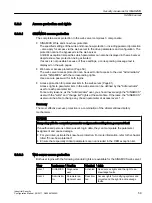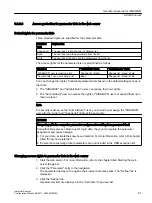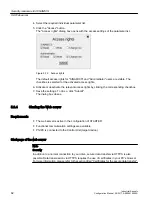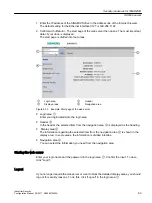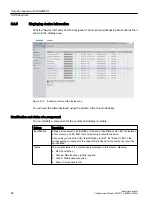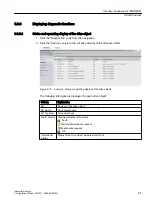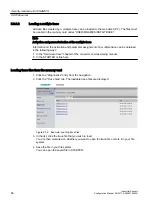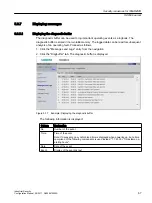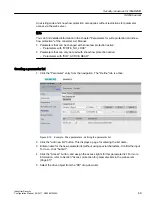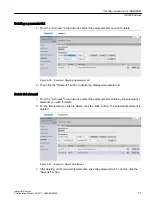
4. Enter the new parameter value in the input field. Confirm the input. To do this, click the
"Submit" button.
– If this value input is not possible or not permitted, the dialog box remains open. A
message text is also displayed.
– If the parameter value input was successful, the dialog box is closed. The new parameter
value is displayed in the parameter list. The "RAM nach ROM" button is highlighted in
red.
5. Save the modified parameter values on the memory card of the drive. To do this, click the
"RAM nach ROM" button.
The RAM content is saved with all changes made to the parameter values. The save
process can take several seconds. Once saved, the color of the "RAM nach ROM" button
changes to green.
5.6.9
Certificates for the secure data transfer
The "Transport Layer Security" (TLS) protocol enables encrypted data transfer between a client
and the SINAMICS drive. TLS is the basis for https access of the browser to the drive.
"Transport Layer Security" (TLS), more widely known under the predecessor designation
"Secure Sockets Layer" (SSL), is a hybrid encryption protocol for secure transfer of data in the
Internet.
The encrypted variant of communication between the browser and the Web server using
HTTPS requires the creation and installation of certificates (default configuration, self-created
certificates or server certificates from a certification authority).
Protecting the HTTPS access
To enable encrypted communication between the browser and the web server via HTTPS, you
must install certificates. You have three options:
● Use the standard configuration
● Use certificates created with certificate software such as OpenSSL
● Use a server certificate from a certificate authority
Key files
For the encryption process you will need 2 key files:
● A public certificate (Public Certificate)
● A private key (Private Key)
Security measures for SINAMICS
5.6 Web server
Industrial Security
Configuration Manual, 08/2017, A5E36912609A
73

